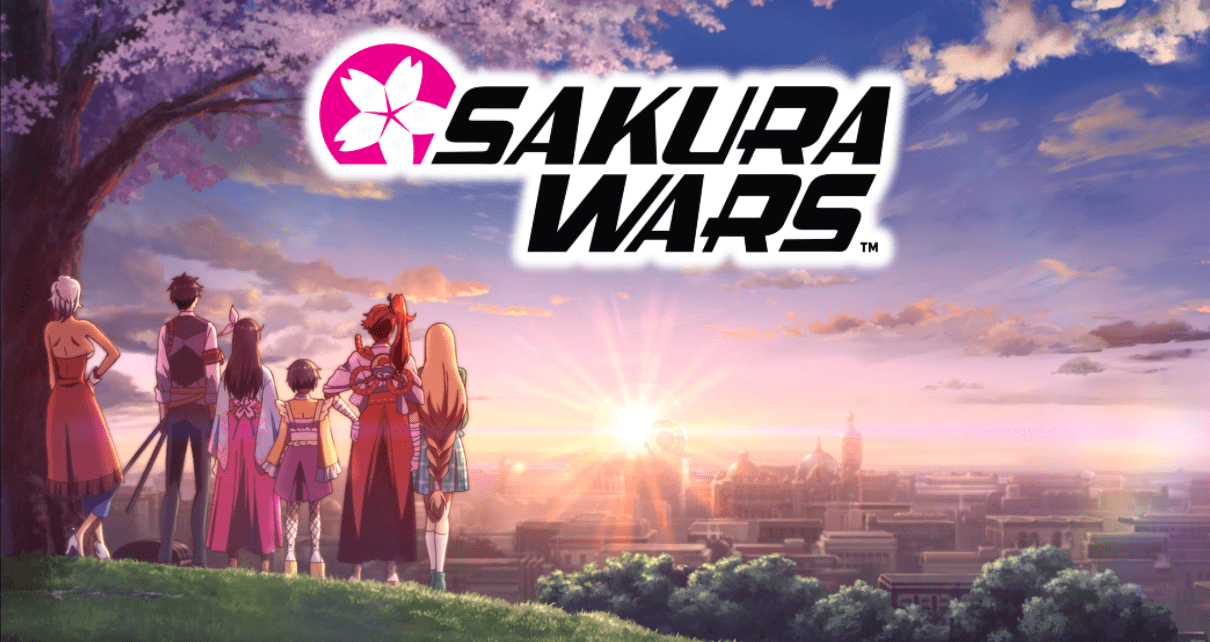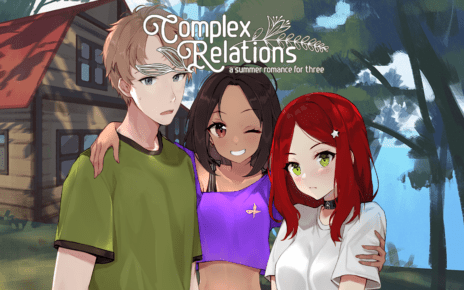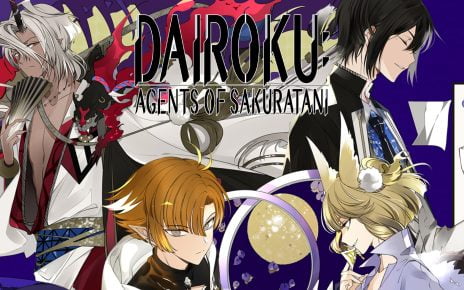It’s showtime! The newest installment of Sakura Wars is finally releasing on the PlayStation 4. You may have read my preview of this title, but now it’s time for the full review.
This is the latest title in a series where you command an all-female musical theater troupe who also double as the city’s defense against the demon invasion. It’s a rather unique concept.
Sakura Wars as a series has traditionally been somewhere between a dating-sim, a visual novel, and a strategy RPG. This is actually the first title in the series where it wildly differs from this format.
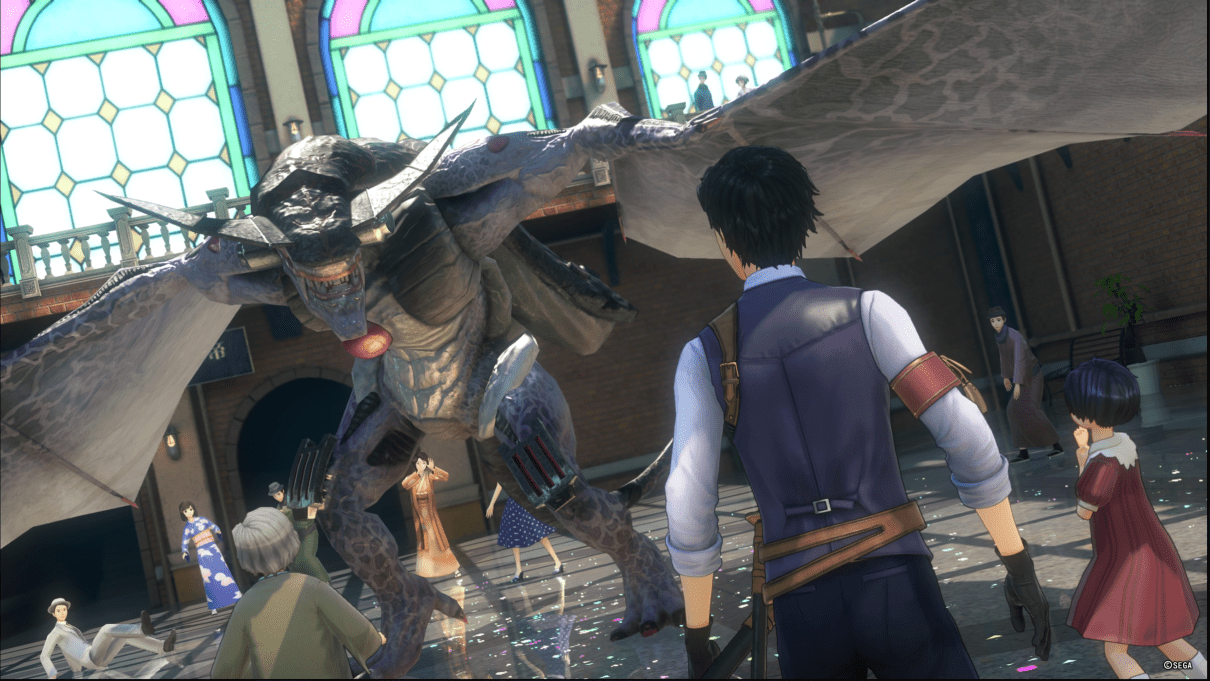
Gameplay
This title dubs itself as a dramatic 3D action-adventure game. Calling itself an action-adventure is a bit of an odd choice, but I can see where it has come from. It seems to have elements from many genres but does not strongly match a single one.
The main focus is moving through the story set in an alternate steampunk version of 1940’s Tokyo. This happens by following quest beacons and usually involves talking to different people, perhaps fetching something or delivering a message. This is where I feel it plays similar to a JRPG in areas such as moving around the world and a strong focus on the story and talking to characters, but it has little focus on stats and levels.
The vast majority of the time in the game is spent talking to characters in the theater and occasionally in the surrounding area. While there are quests to guide you, I find that I spent more time running around and interacting with the characters whether as part of the main story, side quests or just going up to a character and talking to them.
One of the more dating sim style elements in this is your relationship level with the other characters. While this can be improved in a number of ways, these interactions do help. By spending time talking to others, you can trigger cut scenes which sometimes lead to those opportunities. These aren’t always indicated by an icon in the game, so taking it slowly and exploring can be rewarded. Some events may not trigger unless you have the required trust level too.
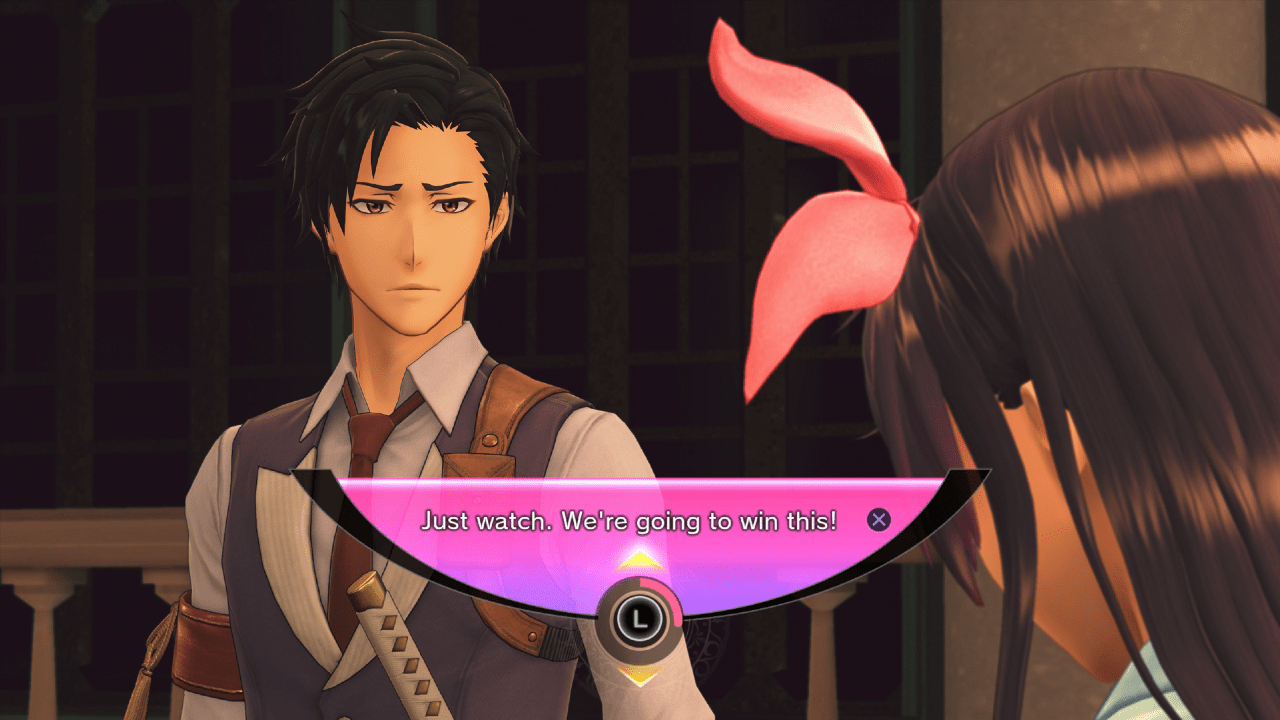
Some of these cut scenes give you choices. One thing I found interesting was that unlike most visual novels or dating sims, the choices are often timed to add a bit of pressure. There are alternate types of choices too. How intensely you say something is a common one – this can lead to a scene being romantic or having you shout in someone’s face – not quite so romantic! Or it can be used to show your enthusiasm where more might be better.
There are some rarer scenes where you can interact more directly with someone too. It lets you choose things about the environment and the character to focus on. Whether you take the route of looking at their beautiful eyes or their busty figure may lead to different dialogue and reactions.
While there are battles, these are much rarer than in most games. They become more common towards the end of the game, but still not to the level of a standard RPG.
The battles themselves are similar to the musou or hack and slash games. You get into your steam-based mecha and fight small hordes of enemies. This often involves clearing all enemies out of areas and then being able to move onto the next part of the stage.
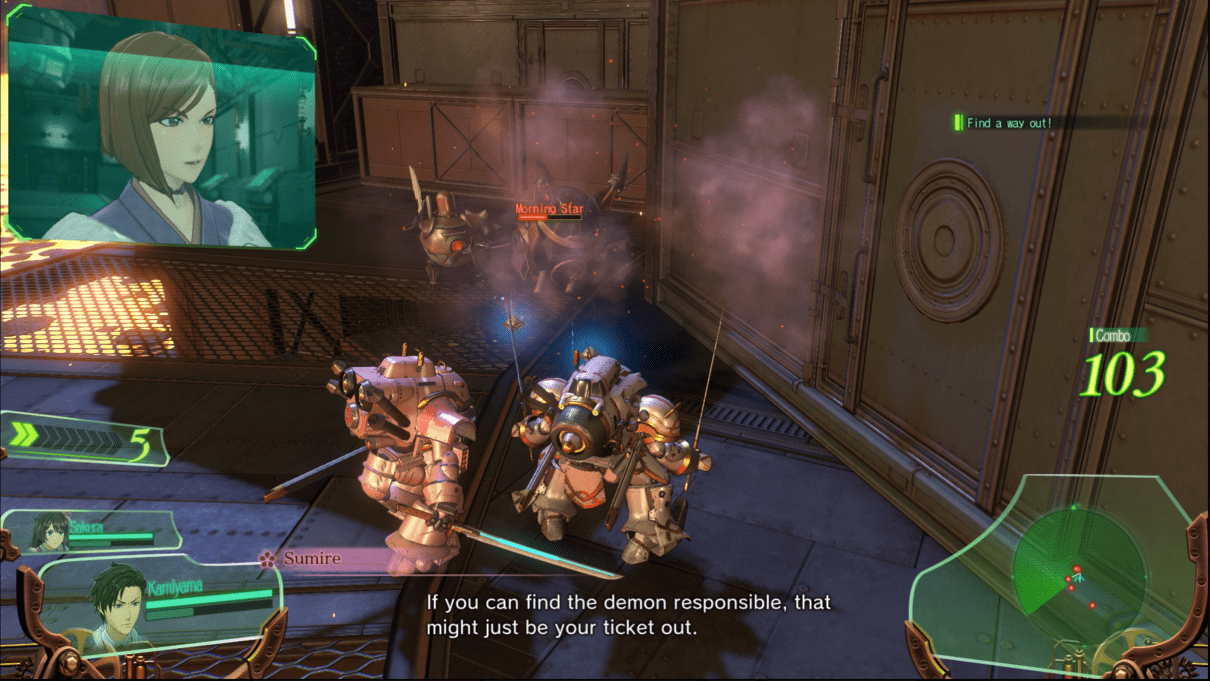
Fighting is moderately slow-paced, with benefits for dodging at the last minute, taking out multiple enemies, and working together with your teammates who fight alongside you. You can lose these benefits by taking critical hits. You can usually switch between two characters too.
I feel like the battle system does have some issues. Dodging is great when fighting one on one and particularly brilliant in certain boss battles, but it can be hit or miss when in the middle of a crowd of enemies. This is just because so many enemies are attacking at the same time, sometimes including some from out of frame. The camera needs to be manually turned too unless using the recently added lock-on system, which does not help with this. It is good that they listened to the feedback from the Japanese release and added lock-on, as it improves things quite a bit when used, but can make things too easy at times I felt.
Every character is balanced differently and better at different things. This is generally a good thing but it can be an issue too as you don’t get to chose which two characters are available. Flying enemies are a typical example of where this becomes a problem. If you have a ranged character, these are dealt with within seconds. If you don’t, there is a trick to taking them out with some very accurate jumping but it’s still quite difficult. It becomes a bit easier when using lock-on, which only came in a patch a couple of days before release but it’s still difficult. I found it near impossible with one character whose jump attack is a flying kick and always had to switch.
While not in the fighting part itself, there is also occasional platforming in battle areas. You can move along the areas, sometimes dodging enemies or breaking boxes to power up the special attack. Every so often moving platforms came along. These were generally fine but did sometimes feel like they broke the flow. A few near the end were quite difficult until learning the trick too – areas where you needed to fall from one area to the next repeatedly, while enemies shot at you in mid-air.
After a certain point, you can replay battles both as they were originally and with alternate characters. Again, this can be used to raise the trust level of the characters, as well as unlock some extras. I was just glad for more chances to fight, as I do enjoy the battle system, despite its flaws. It allowed me to try completing levels in different ways too.
Outside of the main gameplay, there is also a minigame called Koi-Koi Wars. This lets you play a matching card game against the characters. This is a nice distraction and can be quite fun. There are quite a few characters to play against, but the majority of characters are not possible to unlock initially.
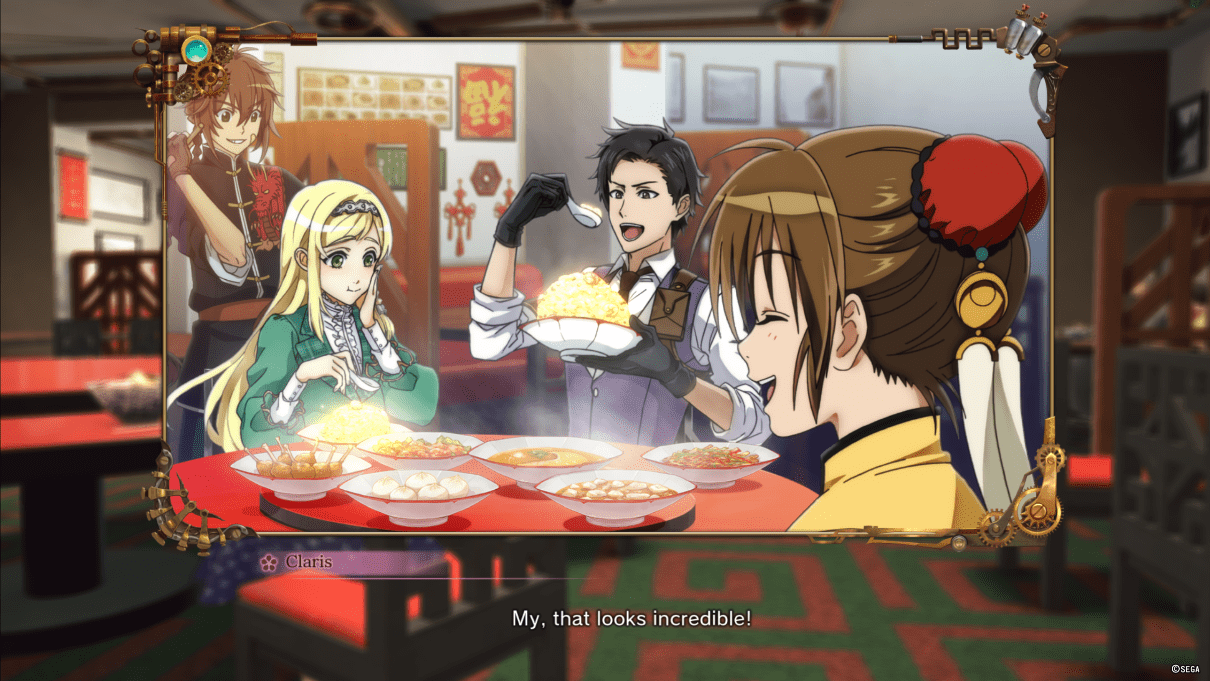
Story
The writing team for Sakura Wars has some rather well-regarded names. It involves Jiro Ishii, the writer of 428: Shibuya Scramble, Takaaki Suzuki who worked on Digimon Adventure Tri and Takaharu Terada who directed Valkyria Chronicles, among others.
The story starts in an alternate steampunk version of 1940 Tokyo. The world is at peace, except for the occasional demon attack which is taken care of by Combat Revues, who use steam-based mechas to fight against the invasion.
We learn that most of the members from the former Tokyo, Paris, and New York Combat Revues disappeared when fighting against the demons years ago. These would be the characters from the previous games.
This latest Sakura Wars title is not exactly a sequel to the previous games, though it does feel like it in some ways. It is a soft reboot that focuses on a new cast of characters. That said, while newcomers to the series will be absolutely fine, characters and references from the previous games do appear. As a fan of the old series, I enjoyed seeing all the little references dotted around, but felt like the focus was firmly on the new cast and story-related references did not need knowledge of the former titles to understand.
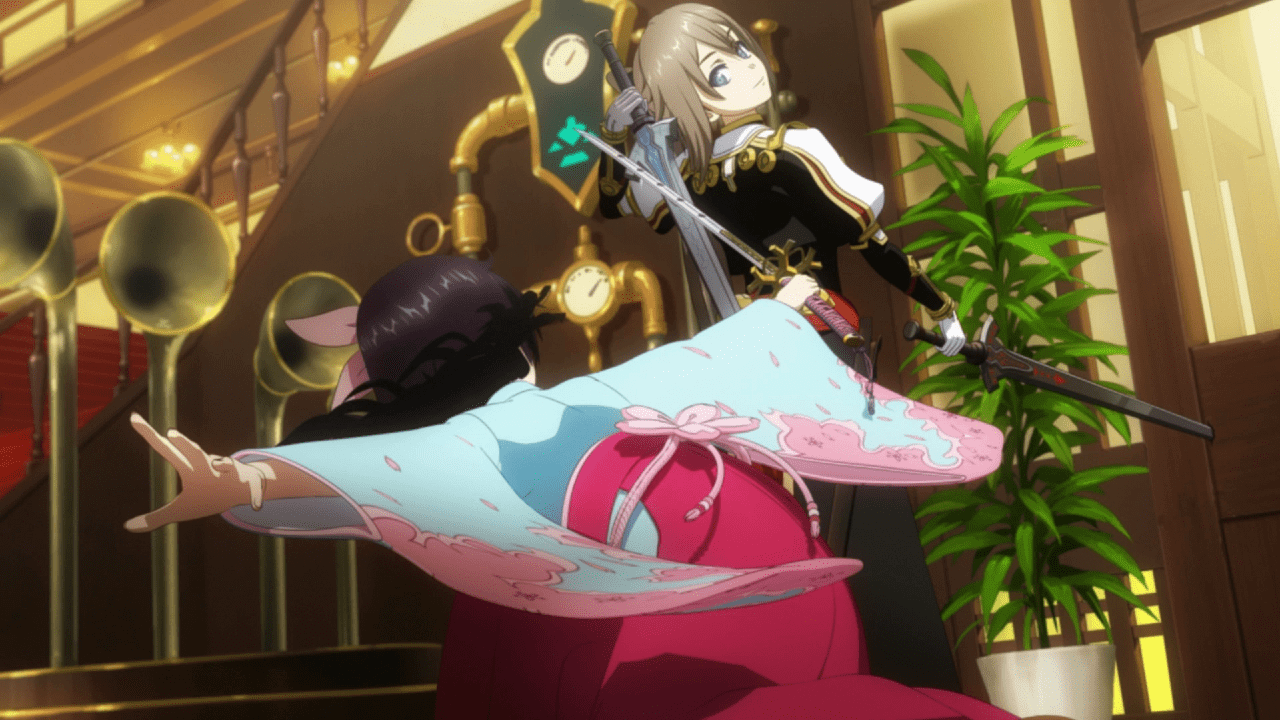
Our new cast of characters finds themselves in a dire situation. They’re not great at acting and they don’t have enough strength to defend Tokyo. Even their finances are terrible, which is a reoccurring theme through the first few chapters. Bringing in more money is an issue too, with theater-goers finding most of their enjoyment from watching them mess up on stage. Understandably, ticket sales aren’t great.
The cast’s issues are only compounded when they find out that they will be disbanded if they do not win a contest against other Combat Revues around the world. However, not all is lost – our main character Seijuro is called in to lead the new Imperial Combat Revue and get them back into shape. Along with this, a new member who happens to be a top star joins the troupe too!
Unfortunately, more issues start occurring soon. More powerful demons start to attack the city. Now they don’t just have to contend with competing against the other Combat Revues and possibly being disbanded, but with a demonic plot going on in the background. One of the demons even happens to look like the previous leader of the Imperial Combat Revue, who went missing years ago.
Initially, I was a bit concerned about the story, as winning the Combat Revue world games did not seem to be an overly interesting goal. Luckily I was soon far more engaged with the story as more was revealed and the other aspects came to light.
I don’t feel like the story would win any awards on its own admittedly, but it was interesting. I did feel like the ending tied up most of the loose ends and was generally satisfying, but I was left with some questions.
One issue I did have with endings and the story generally is that it felt like there was little reason to replay the game more than twice. All five characters have their own ending, but aside from a few minor changes and an anime scene which is less than two minutes long, these were practically identical. It was great to see the alternate dialogue options, but going through five times to see all endings didn’t feel rewarding. You can use manual saves which have been again added due to feedback from the Japanese release to help alleviate this. There is still quite a lot to complete again with little difference for the third, fourth, or fifth playthrough to get those endings though.
With that said, I enjoyed the story and the atmosphere they’ve built for the world. The characters are really the stars of this show though.
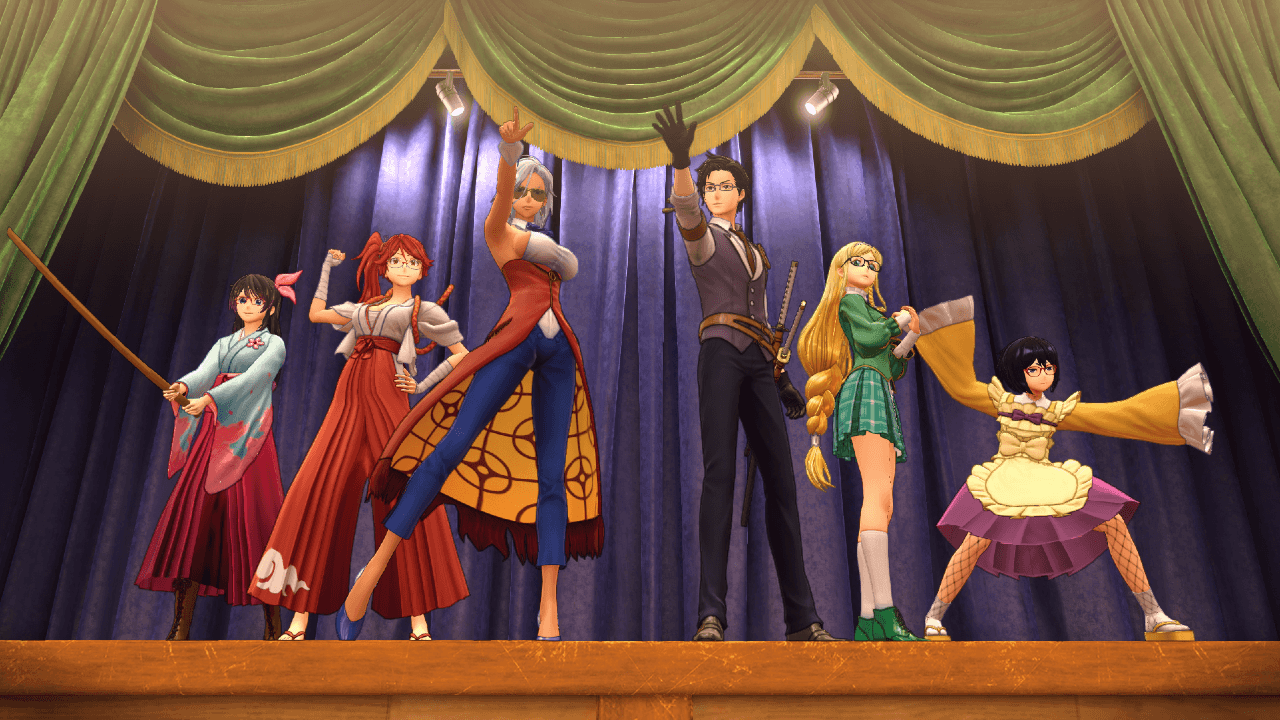
Characters
On coming to Tokyo, Seijuro meets an old friend called Sakura Amamiya. She happens to have joined the Tokyo Combat Revue as it has been her dream after a certain event occurred in her childhood. Despite being excitable and childish in many ways, she shows incredible determination.
We soon get introduced to Claris, who you can often find reading books. She can be a pessimist and does not seem to have much confidence in either herself or the group. We do get to find out about her dreams and why she does not believe in herself along the way. You also get the chance to share some intimate moments with her as you explore these.
Hatsuho is quite brash, which contrasts with her background as a shrine maiden. She’s quick to anger at times but seems to care deeply about her friends. She has been a long time friend of Sakura.
Azami is a young ninja girl who loves snacks a bit too much. She is only thirteen years old but takes her position and training as a ninja incredibly seriously. She acts more mature than the older girls at times while being childish on other occasions.
Anastasia is a top star who joins the Combat Revue near the start and is incredibly serious about her craft. She can be quite cold and stand-offish, but she supports the troupe in a number of ways.
Each of these characters gets their own chapter where you get to learn about them more. I did feel like one character didn’t really get enough of the spotlight even in her own chapter and the title character was represented far more than any of the others. This felt like a pity, as I liked the majority of the characters as much as I did the main one. This may also partially be because the main characters are quite similar to those from original, some being fairly obviously inspired such as Hatsuho’s personality being similar to Kanna and Anastasia being a somewhat cold Russian, much like the original’s Maria. Some are less so, such as Azami filling Iris’ ‘younger team member’ position, but having a very different personality.
There is a full cast of supporting characters too. Sumire from the original Sakura Wars is back and in charge of the theater. We also meet quite a few reoccurring characters who either add to the story or provide side quests.
A lot of the humor came from the interactions with and between the characters. These scenes were hilarious at times and while still funny, could be quite typical anime jokes at others. I still enjoyed it.
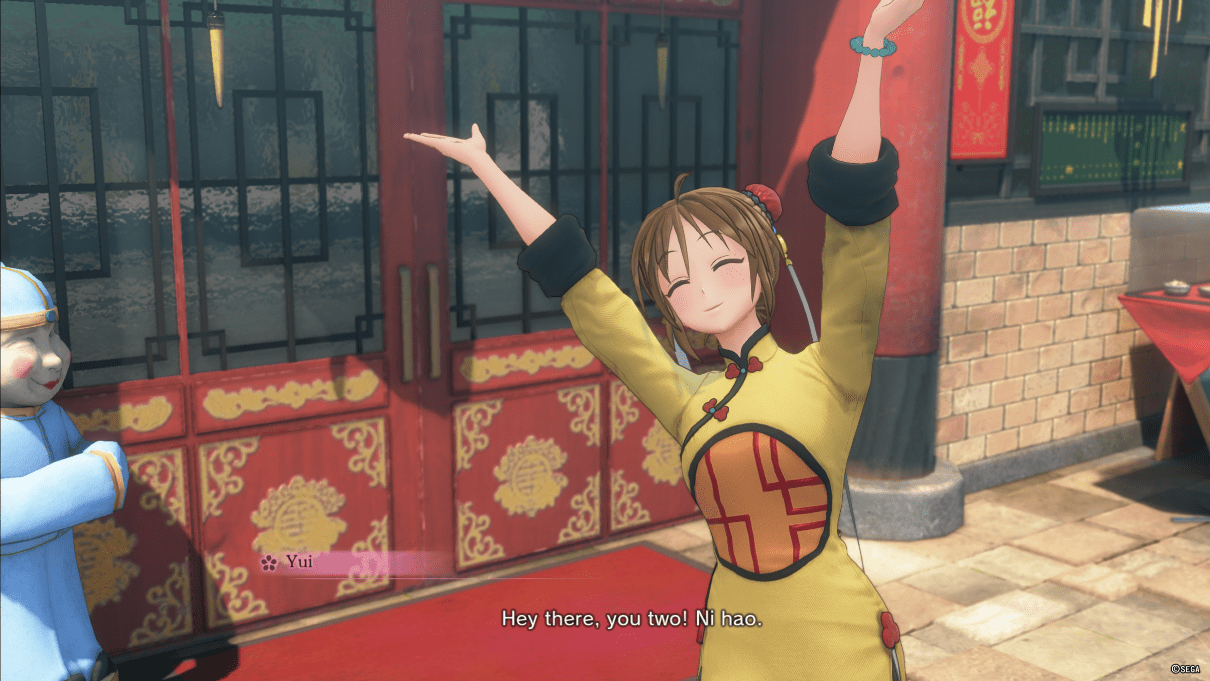
Graphics and Audio
One heavily marketed point about this game is that the main characters were designed by manga artist, Tite Kubo. He is well known for his work on the manga and anime Bleach. There is also work from artists who have worked on K-On!, Lucky Star and Sword Art Online. The character designs do really stand out as unique and the world itself has a brilliant atmosphere, partially due to the design and detail in the graphics. For an anime game, it’s quite good. As well as the 3D graphics, occasional anime scenes are used too which look brilliant.
While the graphics are impressive enough, I find that the sound steals the show. Another big name has worked on the music – Kohei Tanaka. Outside of the Sakura Wars series, he has worked on titles such as Dragon Ball and One Piece. The opening song blew me away and the background music is great too. There are other vocal pieces throughout too.
There are a lot of voiced scenes in Sakura Wars. There are even more scenes without voicing. The voicing is very well done where it exists, but the scenes without voicing felt a bit off seeing the gestures and lip movement without it. This is the downside of having all of these extra interactions and cut scenes – I imagine that the cost of voicing everything would have been too high for a niche game such as this. I am still glad they did not cut down the number of scenes though.
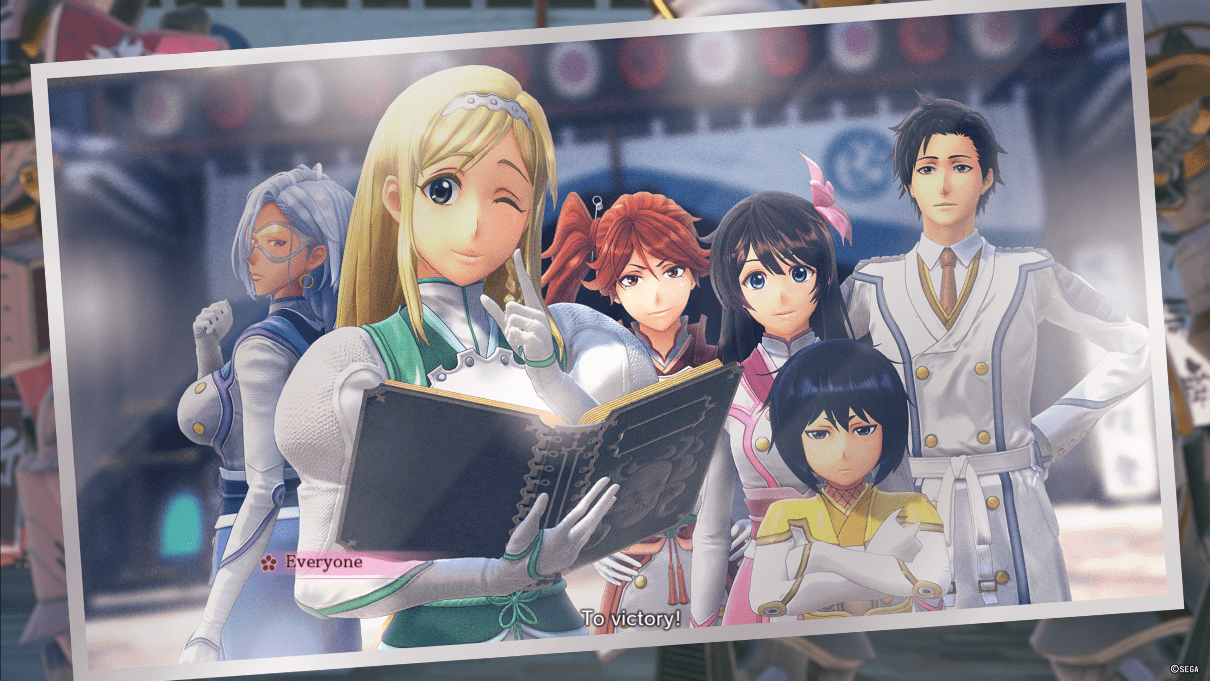
Verdict
While the game does have some issues as mentioned, the majority of my experience has been great. The interactions with the characters particularly stand out and the game’s focus is definitely on that. As such, I have to say;
SAKURA WARS IS RECOMMENDED

If you decide to purchase this, I would recommend carefully deciding on your edition if interested in the cosmetic DLC. The physical edition (US/UK) comes with stickers and theater costume DLC, while digital versions come with a dynamic theme and a variety of other costumes, accessories, and background music depending on the version purchased.
If you think you’ll enjoy Sakura Wars, why not check out our thoughts on Making Lovers, a recent visual novel? Or perhaps Atelier Ayesha, a character-focused JRPG.
Many thanks to SEGA for a PlayStation 4 code for this title.

A gamer since the days of Amstrad and DOS and someone who has dabbled in a variety of professions. He enjoys a wide variety of genres, but has been focusing on visual novels and virtual reality in recent years. Head Editor of NookGaming. Follow him and the website on @NookSite.

